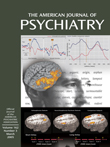In Daniel Stern’s previous, internationally acclaimed works such as
The Interpersonal World of the Infant (1), he has parsed human interactions into the small, fleeting moments between mother and infant that give rise to the infant’s interpersonal world and sense of self. Temporality is central to his concept of vitality affects, a type of feeling that describes the contour of an experience such as a fading smile or an explosive inner sense of joy. It seems only natural, therefore, that he should now turn his attention to the nature of time itself. His latest fascinating contribution,
The Present Moment in Psychotherapy and Everyday Life, is a highly imaginative exploration of “nowness,” of what constitutes the present moment.
Stern begins by pointing out that we are subjectively alive and conscious only “now,” that “now” is when we directly live our lives, that the present moment is the only time of raw subjective phenomenological experience. To explore what he means by “now,” Stern describes a microanalytic interviewing approach (spelled out in detail in an appendix), which he terms “the breakfast interview,” in which what was experienced in about 5 seconds while making breakfast is explored in a detailed 1.5-hour interview and graphed according to the intensity, effort, and fullness of the event and the feeling; sensation, thought, affect, or action that was occurring at the time. Stern’s examples make what initially seems like a laborious effort come to life; one subject’s ongoing “affective/moral couplets” (good/bad or moral/immoral on my diet) come to light, while another subject’s moment-to-moment testing of limits and boundaries are revealed in an action as simple as his experience of pouring his morning orange juice.
Using these interviews as a basis for his conclusions, Stern goes on to spell out the nature of the present moment—its duration, characteristics, and temporal architecture and what protects and separates it from past and future. In doing so, Stern also draws widely from other disciplines, creating a fascinating synthesis. For example, in speaking of the present moment as something that lasts no more than 10 seconds and usually closer to 5, he notes that most spoken phrases last in the range of 3–5 seconds, that a breath cycle takes around 3 seconds, that after a 3-second pause in music the subjective sense of forward movement stops, and that both vocalizing turns and packages of maternal movement and sound with their infants last around 2–5 seconds. Stern concludes that the present moment is a special kind of story—a lived story that is nonverbal and need not be put into words. A temporal contouring of affective experience, a kind of vitality affect, serves as the backbone of the plot of this lived story.
In part 2, Stern contextualizes the present moment, placing it in an intersubjective matrix and arguing that intersubjectivity itself is a basic, primary motivational system with a status like sex or attachment. He argues that it is a desire for intersubjectivity that drives the process of therapy forward as patients want to be known and share what it feels like to be them and that the present moment is an example of implicit knowing, automatic and often out of awareness. Finally, Stern tackles the vexing and thorny problem of consciousness as it applies to the present moment: forming the present moment is implicit and out of awareness, but to qualify as a present moment it must enter some type of awareness or consciousness, but what kind? Stern suggests the utility of breaking consciousness into types such as perceptually based phenomenal consciousness, verbally based introspective consciousness, and socially based intersubjective consciousness.
In part 3, Stern shifts to a clinical perspective on the present moment, placing it at the center of psychotherapy and suggesting its centrality to the process of change. Arguing that present intersubjective moments are the smallest and most basic units of psychological experience, Stern explores how the process of “moving along” occurs in psychotherapy, using his view of the present moment as a microanalytic lens through which the therapeutic process is seen. Championing what he terms “sloppiness,” a two-mind, hit-miss, repair-elaborate way of working in treatment, and giving examples from session transcripts, Stern helps the reader to see the patient’s whole intersubjective, psychological world in the grain of sand that is the present moment.
This work is a must-read for psychoanalysts and psychotherapists interested in psychotherapeutic process and a new and systematic way to think about the “here and now,” which most therapists believe is at the center of where change in psychotherapy occurs. But Stern’s latest work also has the power to show the eternity in a moment, to paraphrase poet William Blake. In doing so, this book will leave every reader with a new appreciation for the richness of even the most seemingly mundane moments in everyday life.

